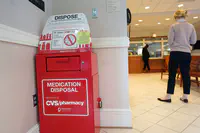One Simple Step Could Help Prevent Unnecessary Overprescribing and Keep Patients Alive
Given that much of the addiction epidemic was caused by overprescribing opioid pain relievers, a critical strategy in curbing America’s worst addiction crisis lies in reducing physicians’ opioid prescribing rates.

A new study showed that when a doctor is informed that a patient of theirs overdosed on opioids, that doctor is statistically likely to prescribe far fewer opioids in the following year. If the patient dies, the doctor is likely to curb opioid prescribing even further. How can this information be leveraged to reduce excessive opioid prescribing and protect Americans from drug addiction and overdose?
What the Findings Show
A recent study out of California arrived at several positive conclusions, ultimately highlighting doctors’ inherent empathy for their patients. How so? When patients overdose and either come close to death or die from opioids, doctors reduce their rate of opioid prescribing in the following year.
This finding was part of a broader research effort conducted by the University of Southern California. As a part of their project, the researchers sent letters to 809 clinicians – most of whom were medical doctors – who had prescribed opioid painkillers to 166 patients who then suffered fatal overdoses. Informative, respectful, and compassionate in tone, the letters also contained information about safer prescribing.1
“Clinicians don’t necessarily know a patient they prescribed opioids to has suffered a fatal overdose. We knew closing this information loop immediately reduced opioid prescriptions.”
When the researchers compared prescribing patterns among these clinicians and those who had not received the letter, lead study author Jason Doctor and his team found that letter recipients wrote 7% fewer prescriptions than clinicians who hadn’t received the notification. Doctor spoke to this point: “Clinicians don’t necessarily know a patient they prescribed opioids to has suffered a fatal overdose. We knew closing this information loop immediately reduced opioid prescriptions. Our latest study shows that change in prescribing behavior seems to stick. The new study shows this change is not just a temporary blip and then clinicians went back to their previous prescribing. This low-cost intervention has a long-lasting impact.” Doctor’s point is clear enough. There is currently no public health policy or methodology for informing doctors when a patient dies from an overdose. Instituting such a policy could be lifesaving.2

Opioid Painkillers Still a Big Part of the Addiction Pie
Unfortunately, the opioid epidemic is no longer as simple as it was in the early-to-mid-2000s, when pharma giants flooded pharmacies with prescription opioids and encouraged doctors to prescribe them to more patients, in greater quantities, at higher dosages, and for longer durations. Today, the opioid epidemic includes prescription opioids, illicit street fentanyl, synthetic opioids (fentanyl analogs), heroin, counterfeit pills, and hybrid drug cocktails of opioid chemicals mixed into cocaine, meth, and even cannabis.
Simply, the opioid epidemic is far more complex than it was when the crisis began two decades ago.
However, opioid painkillers, made by pharma companies and legally prescribed by doctors to patients, are still a part of the addiction problem because some of those patients will become addicted to their meds, or their meds will get diverted into the hands of someone who will misuse them.
According to the Centers for Disease Control and Prevention, while most opioid overdose deaths are caused by fentanyl and other synthetic opioids (20 deaths for every 100,000 Americans), prescription opioids still claim about four lives each year for every 100,000 Americans. Further, the CDC also reported that prescription opioid deaths are back on the rise after leveling off for several years in a row. In 2020, prescription opioid overdose deaths spiked by 17%.3
Further, even though most addicts who die are ODing on fentanyl, that doesn’t mean they weren’t also using prescription opioids. Jason Doctor highlighted the vicious connection between opioid prescribing as a patient’s first exposure to opioids and the fentanyl overdose deaths following after. “The sad truth is, we never addressed the first problem of deaths from prescribed opioids,” the researcher said. “In fact, it’s all mixed together because nationally, approximately half of the people who die of an illicit fentanyl drug overdose have also had an opioid prescription within the past year.” Sadly, excessive opioid prescribing is causing some patients to become addicted, overdose, and die.
A Simple, Low Cost, Low Effort, Yet Highly Impactful Approach to Promoting Conservative Opioid Prescribing

Those who are already addicted to drugs need professional help through drug treatment centers. However, potential public policy interventions – such as mandating notifications from county medical examiners to clinicians when patients suffer overdoses as the USC researchers are recommending – could be used to prevent patients from becoming addicts. Again quoting Jason Doctor, “The letter is a nudge to providers that the opioid epidemic is in their community and affecting their patients. It is easy to read the headlines and assume you are not part of the problem. I believe we can reach about half of the people in the illicit fentanyl epidemic through a doctor who has seen them.” There is no doubting it. The country would benefit from a 7% reduction in opioid prescribing. The country would benefit from medical doctors becoming more aware of the direct effect their prescribing has on their patients and then changing their prescribing habits and exercising more caution before prescribing potentially addictive painkillers.
Sources Cited:
-
JAMA. “Effect of Prescriber Notifications of Patient’s Fatal Overdose on Opioid Prescribing at 4 to 12 Months.” Journal of the American Medical Association, 2023. jamanetwork.com ↩︎
-
USNews. “Letting Doctors Know a Patient Has Overdosed Might Curb Opioid Overprescribing.” US News, 2023. usnews.com ↩︎
-
CDC. “Understanding the Opioid Overdose Epidemic.” Centers for Disease Control and Prevention, 2022. cdc.gov ↩︎








 ®
®